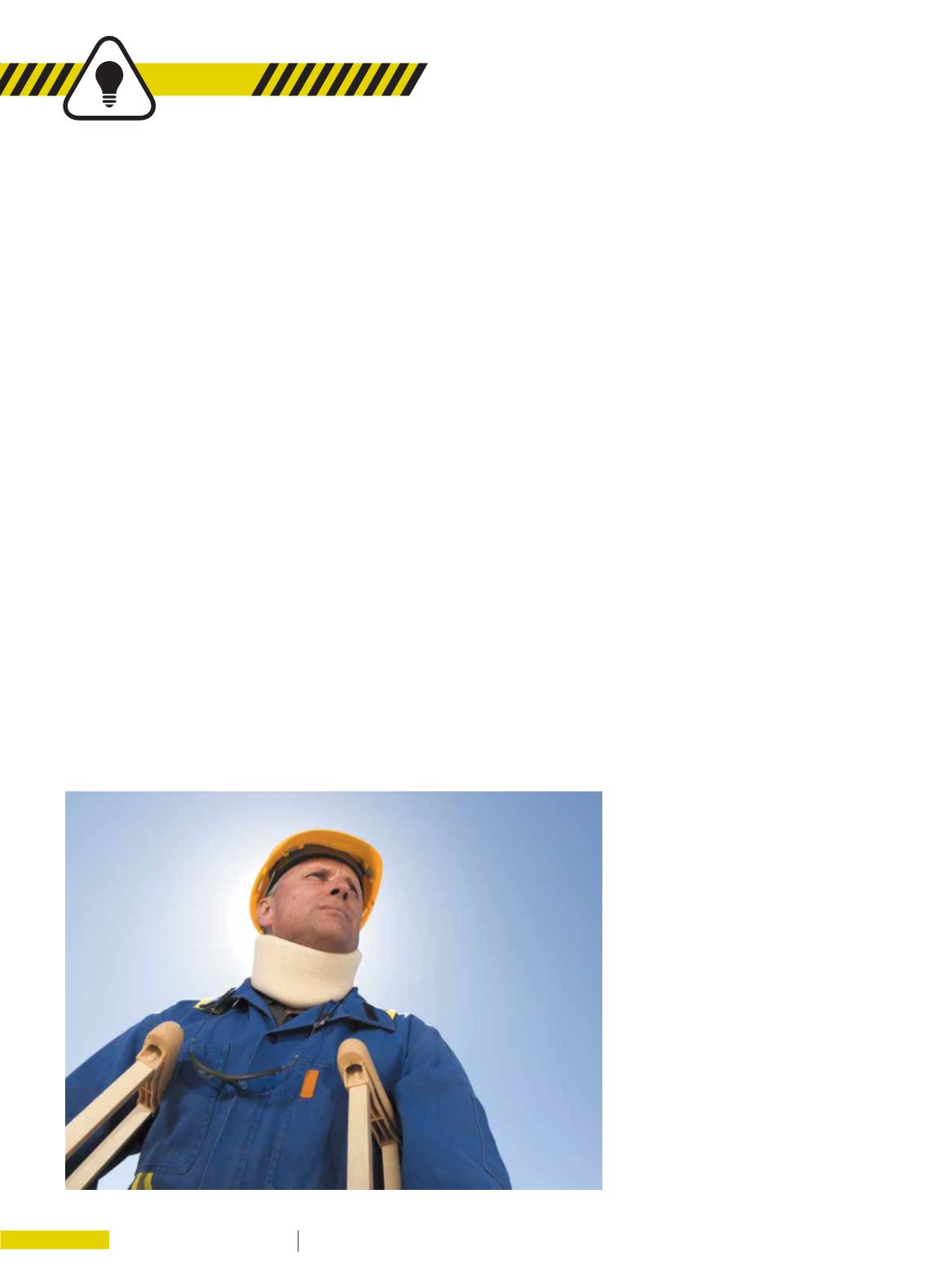

9 4
P L UMB I N G CO N N E C T I O N
S UMM E R 2 0 15
TIPS
I
n this modern age, while we strive
for zero fatalities and zero injuries
from work-related activities, history
illustrates they continue to occur
despite our increasing vigilance. For
this reason, businesses are strongly
advised to review their insurance
arrangements, ensuring they are
covered for such events. You cannot
proceed in business long term with the
view an injury simply will not happen
nor effect your business activities.
In this article we discuss common
exposures to liability for personal injuries,
faced by small to medium enterprises, in
the conduct of their business.
Liabilities are broadly broken down
into those which arise from your
employees and those arising from
non-employees.
WorkCover insurance covers
employees and is overseen by the
Victorian WorkCover Authority (VWA,
which uses the trading name WorkSafe).
Such insurance is a business necessity;
in fact, it is mandated where an
employer pays wages (remuneration)
in any given year of $7,500 or more.
The form of policy is now a statutory
policy, its terms and conditions are not
negotiable. Each party’s obligations
are prescribed within the
Workplace
Injury Rehabilitation and Compensation
Act 2013
. Employers are required
to register with WorkSafe and pay a
premium, which is determined by the
Premiums Order (a Government Order
published each year). By undertaking
these steps an employer is insured for
injuries to its employee which arise out
of, or in the course of, its employment
activities. Like all insurance
arrangements, a deductible/excess is
payable upon the making of a claim – in
this case the excess is prescribed by
statute as the first 10 days of weekly
compensation and $642 in medical
expenses. Thereafter all costs are
borne by WorkSafe.
In most instances, who your employee
is isn’t contentious. On building sites or
wherever there is a hierarchical chain
of command, this becomes less clear.
The issue of who is an independent
contractor (or in lay man’s terms a true
subbie) is too complex for this article.
Suffice it to say, the higher your company
is in the chain of command on-site, the
greater the potential for those below
you to assert an entitlement under your
WorkCover policy.
This is often a source of much
argument between a business and its
workcover insurer; however, it will not
affect your premium to any great extent
until the occurrence of an injury and the
insurer then having reason to reassess
who your company’s employees are.
While this makes you wonder where
the chain of liability stops in such
circumstances, and its consequential
effects to your premium, the VWA is not
as vigilant as the statute enables them
to be. Many sub-contract relationships
are not reviewed with no corresponding
change to an employer’s premium.
Employer entities should note your
WorkCover Policy does not insure your
business for all work-related personal
injury liabilities. Liabilities not covered
by the VWA, for example, include
premium disputes, prosecutions for
breach of WHS legislation or breaches
of return to work obligations.
Public liability insurance is the
predominant form of insurance cover for
injuries to non-employees. This includes
injury to members of the public, injury to
sub-contractors or any other person on
the worksite, on your premises or using
your business services.
As a separate legal entity, which is
either as a person or company, you
INSURANCE ARRANGEMENTS
AND PERSONAL INJURIES
Injuries occur more frequently
than we as a community accept.
Gadens partner
Stuart Eustice
explains the importance
of having the right level of
insurance cover.
















